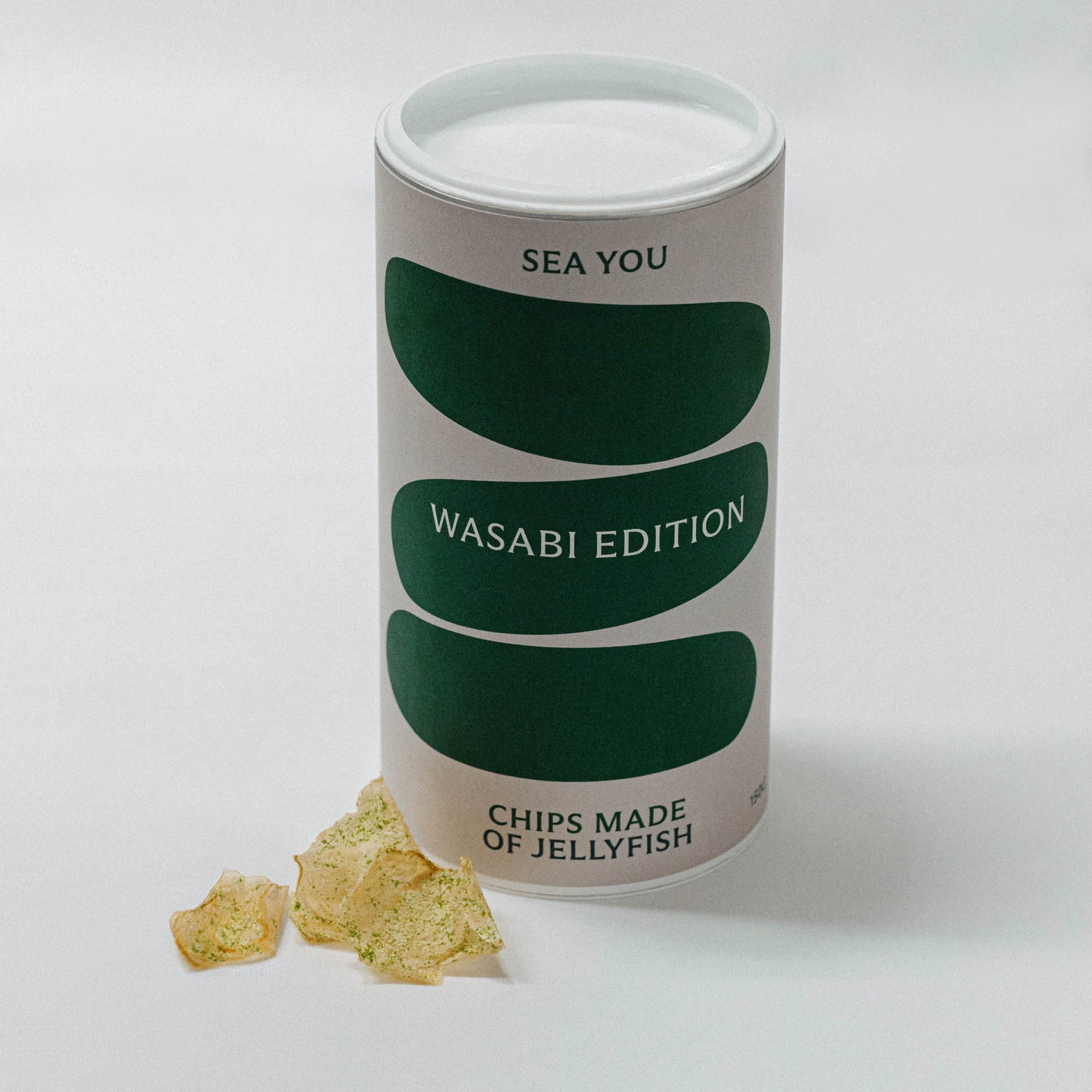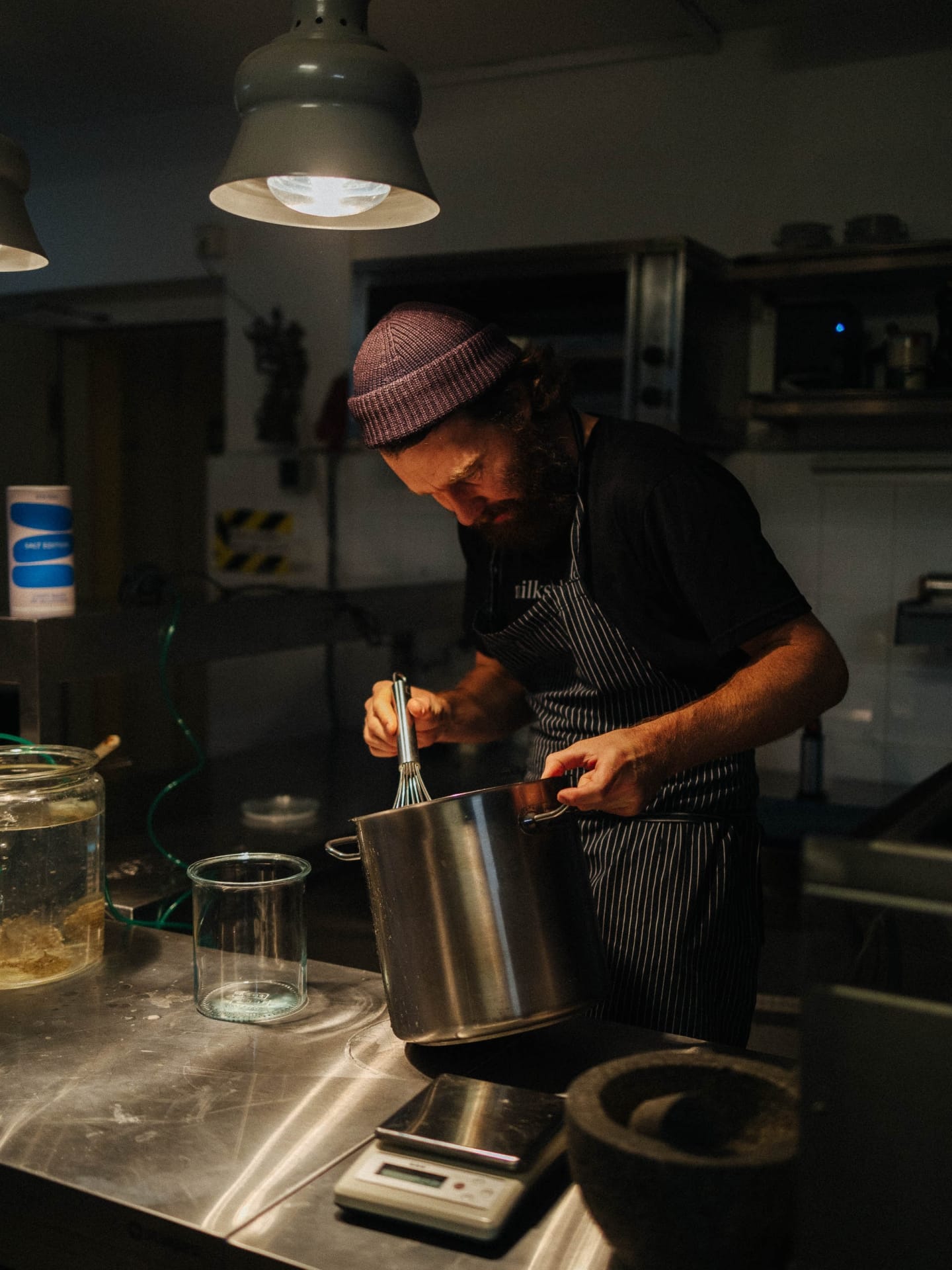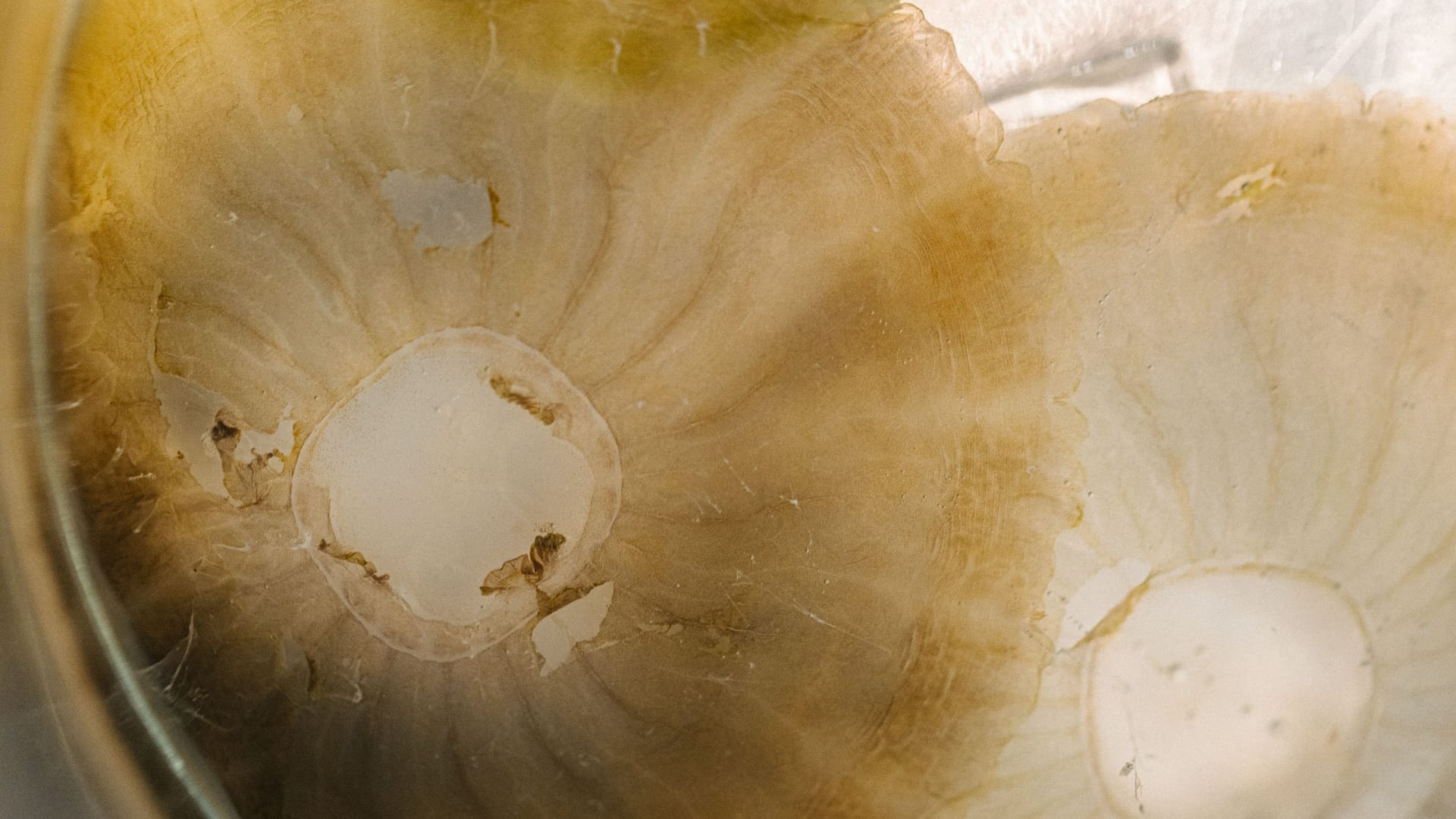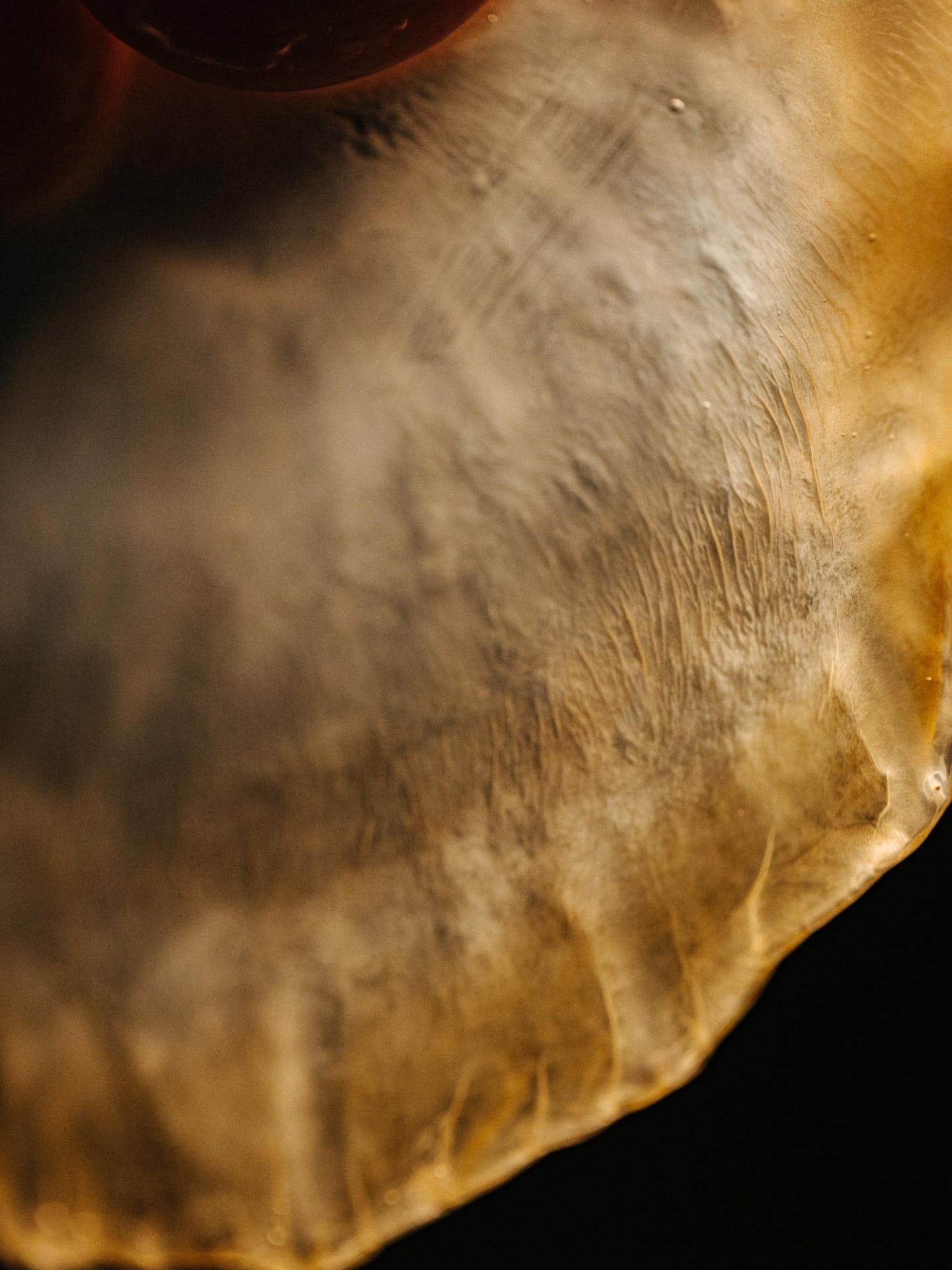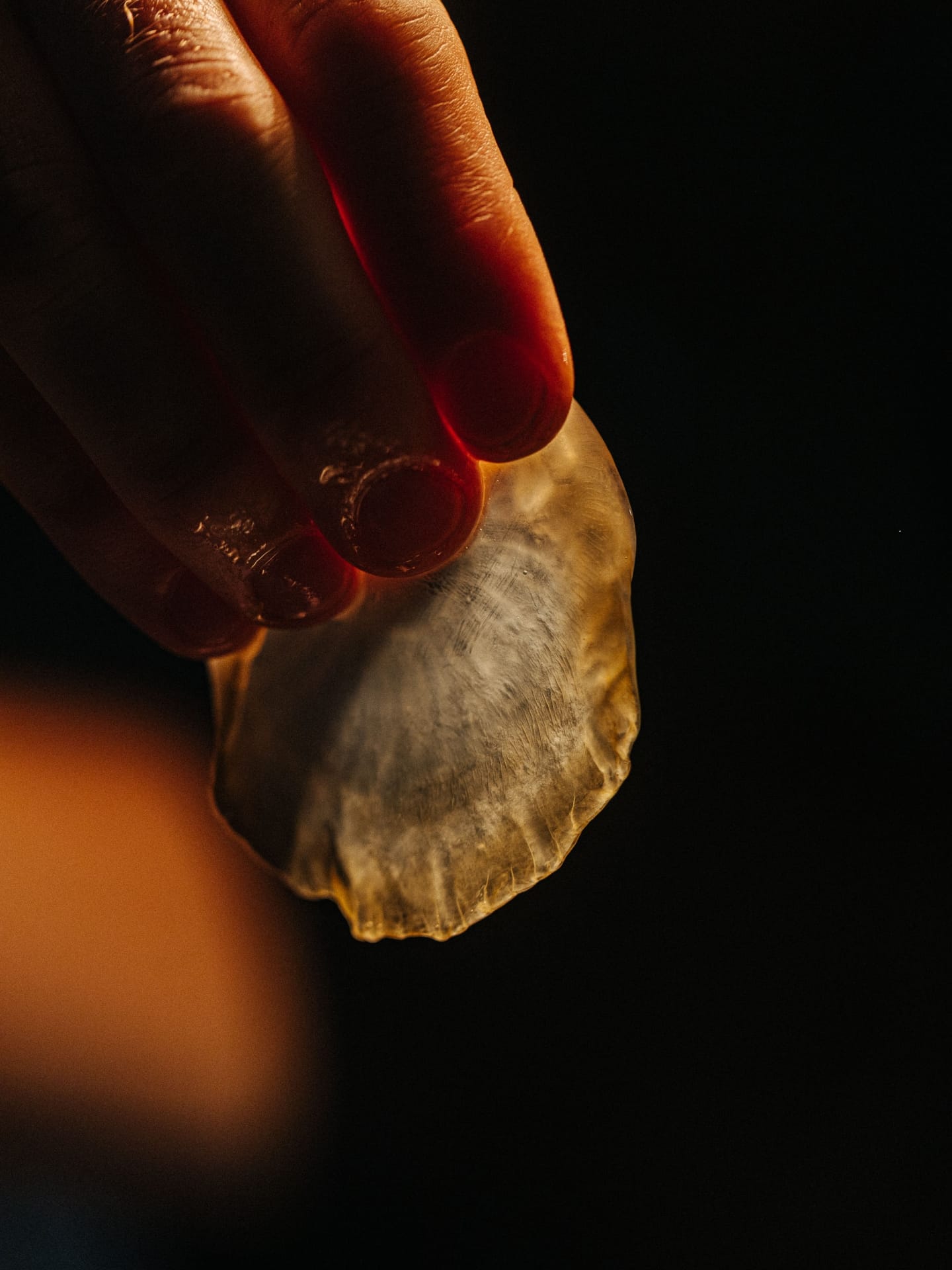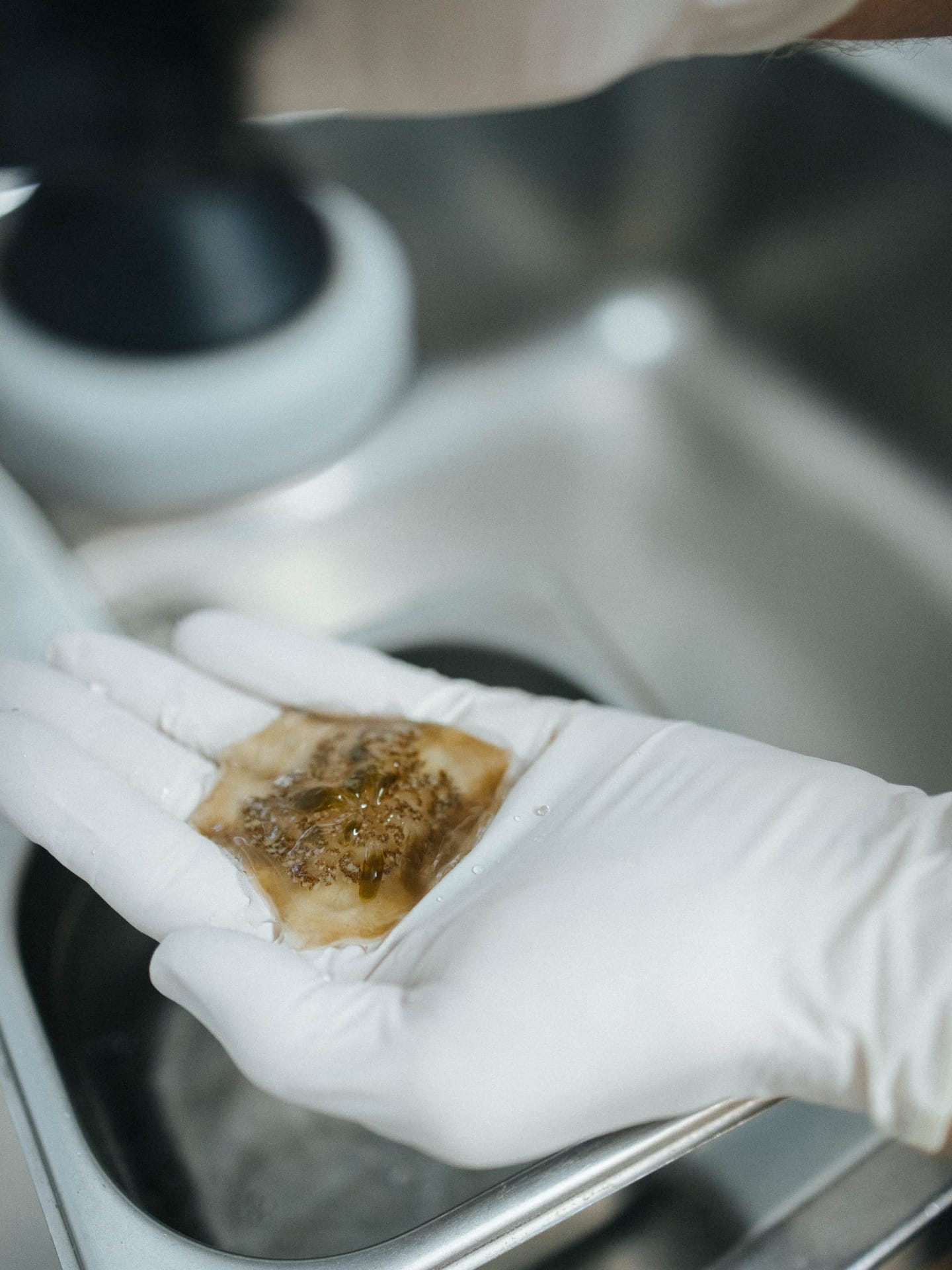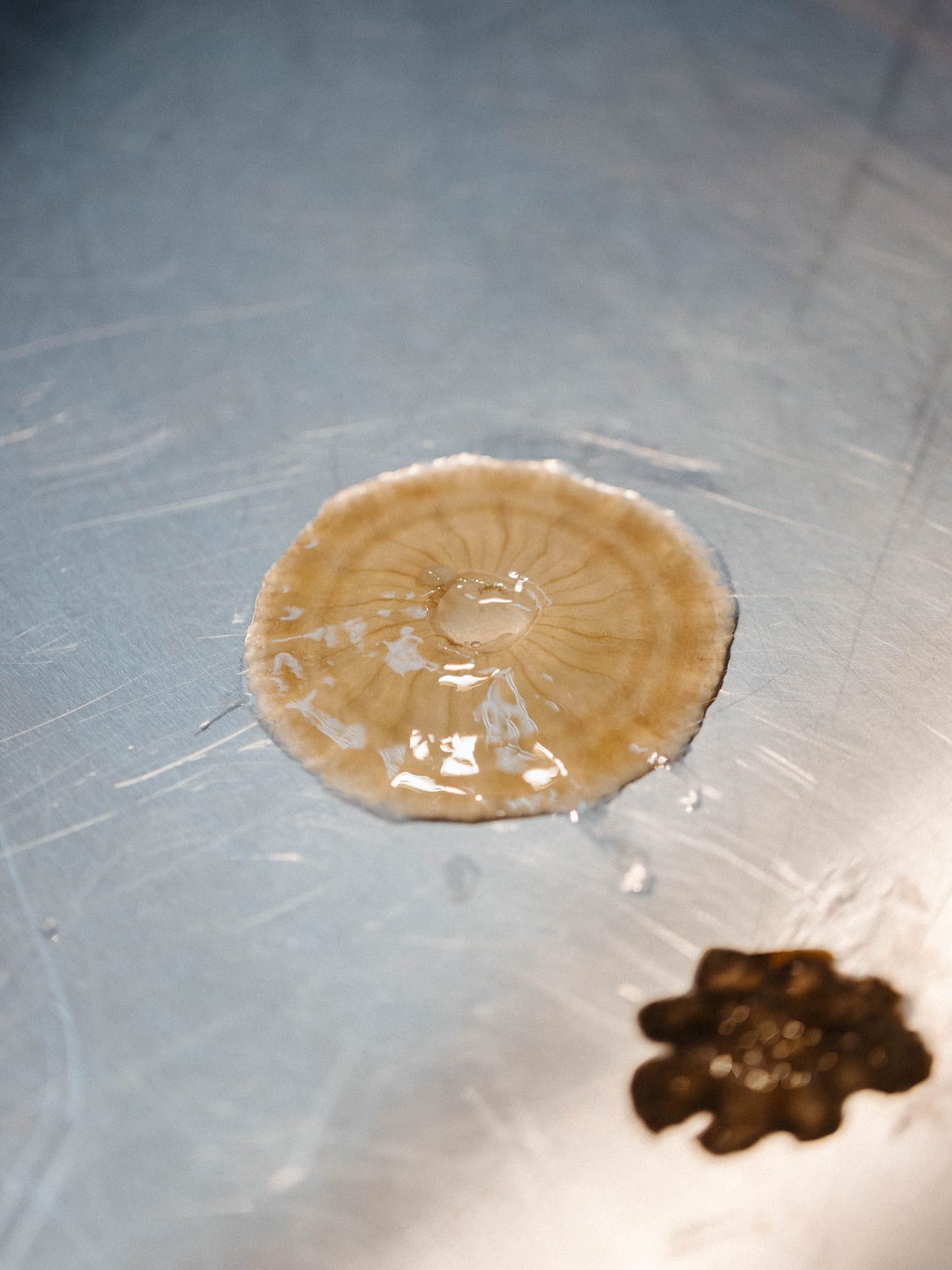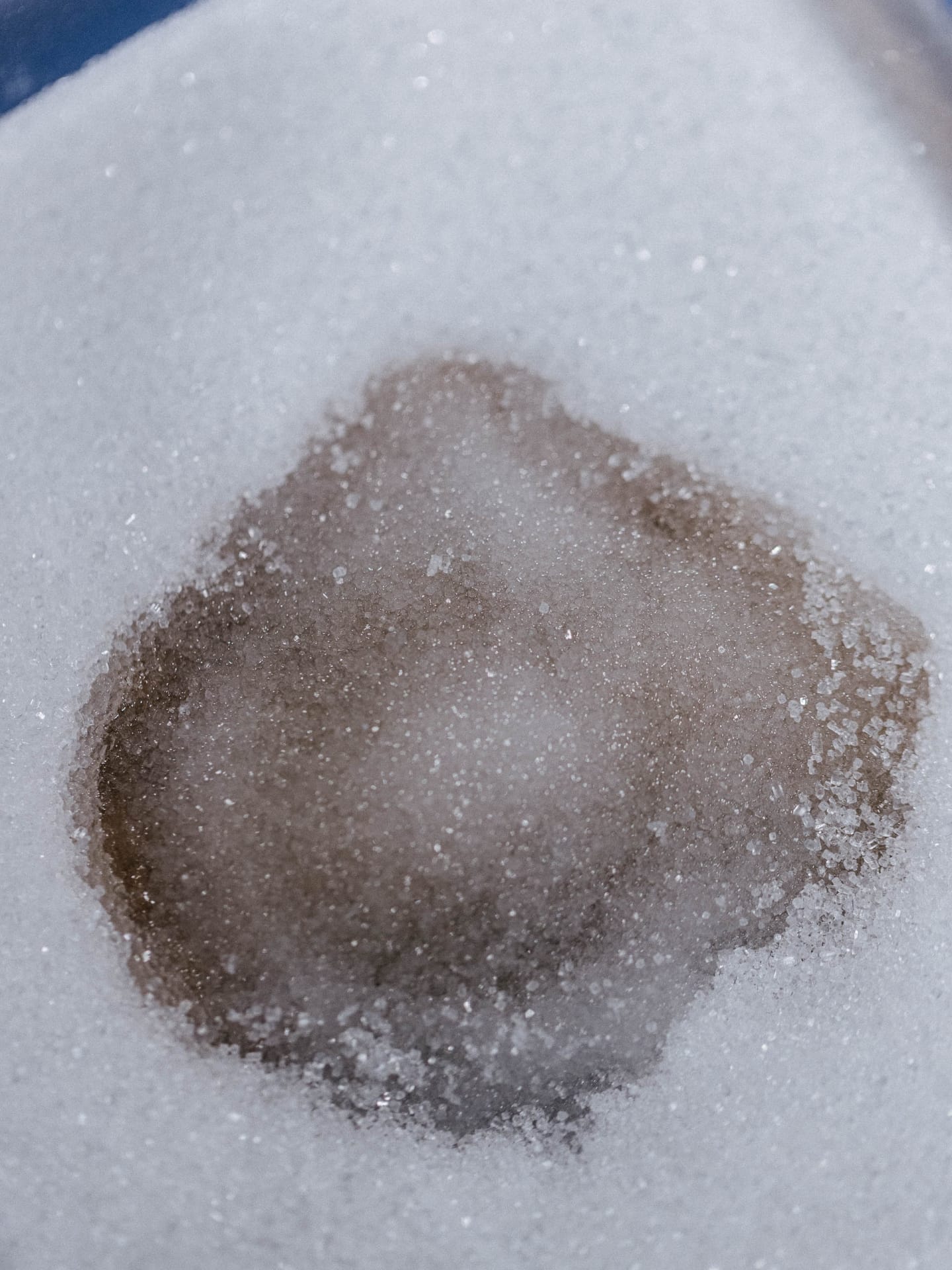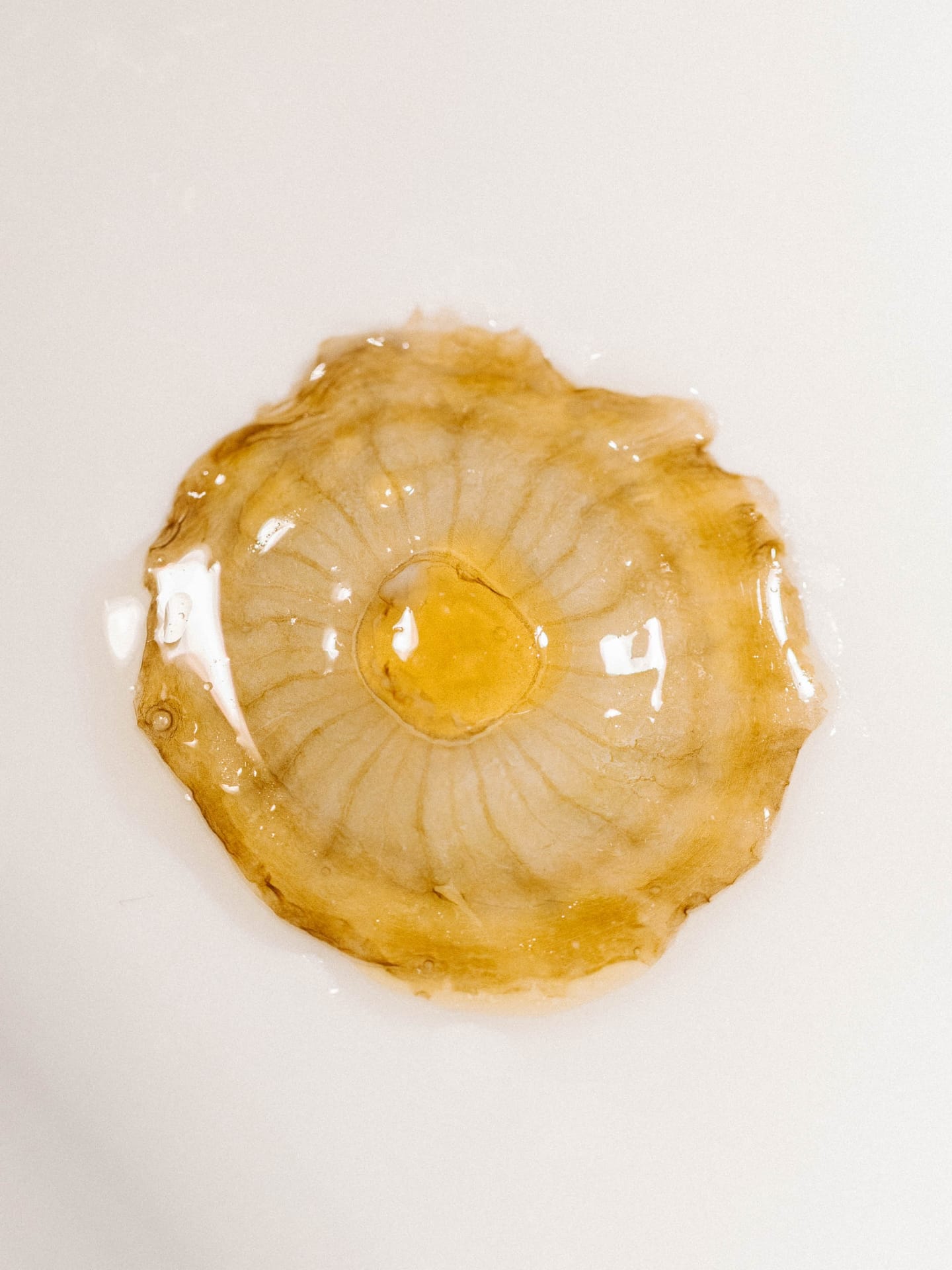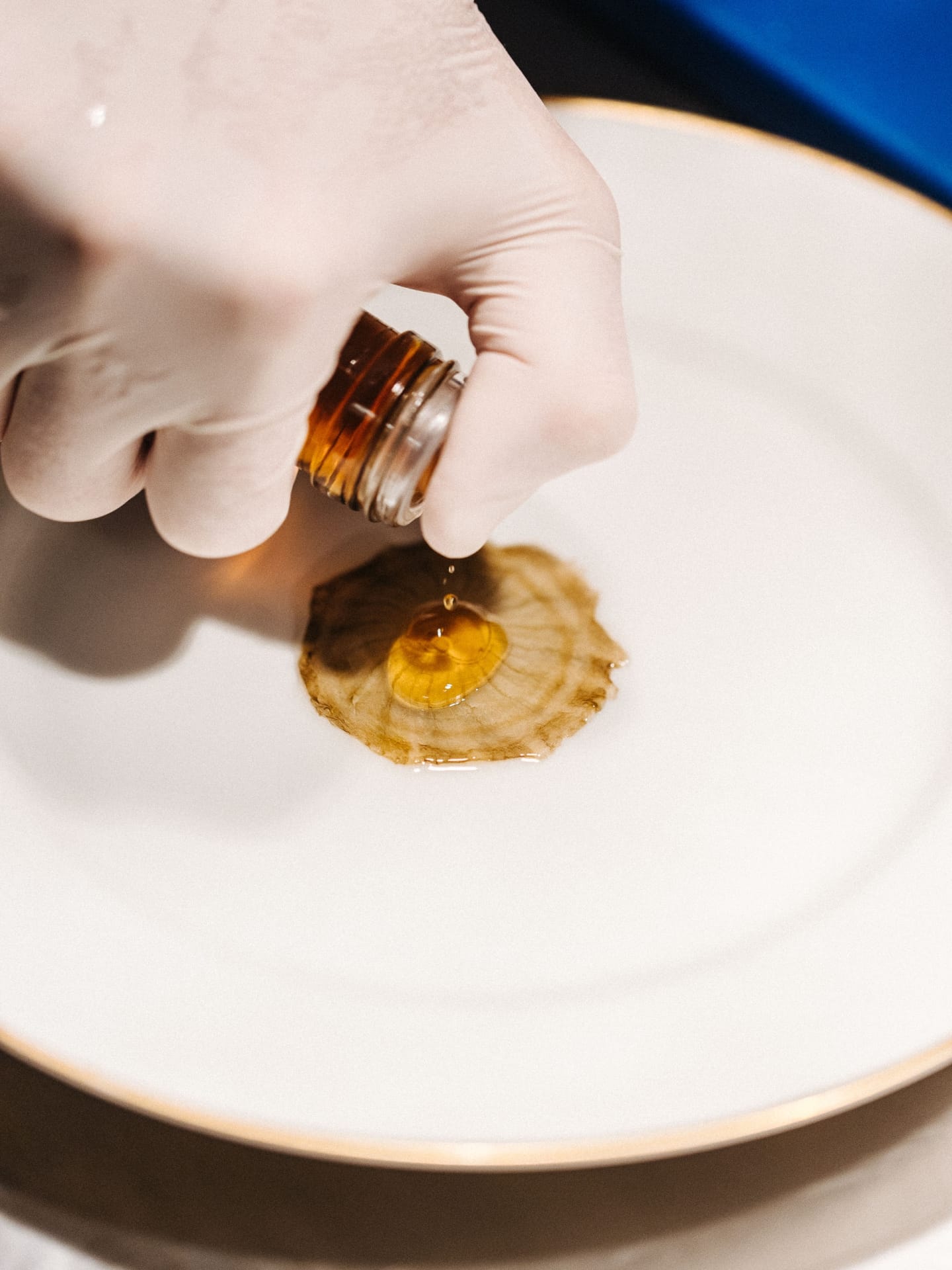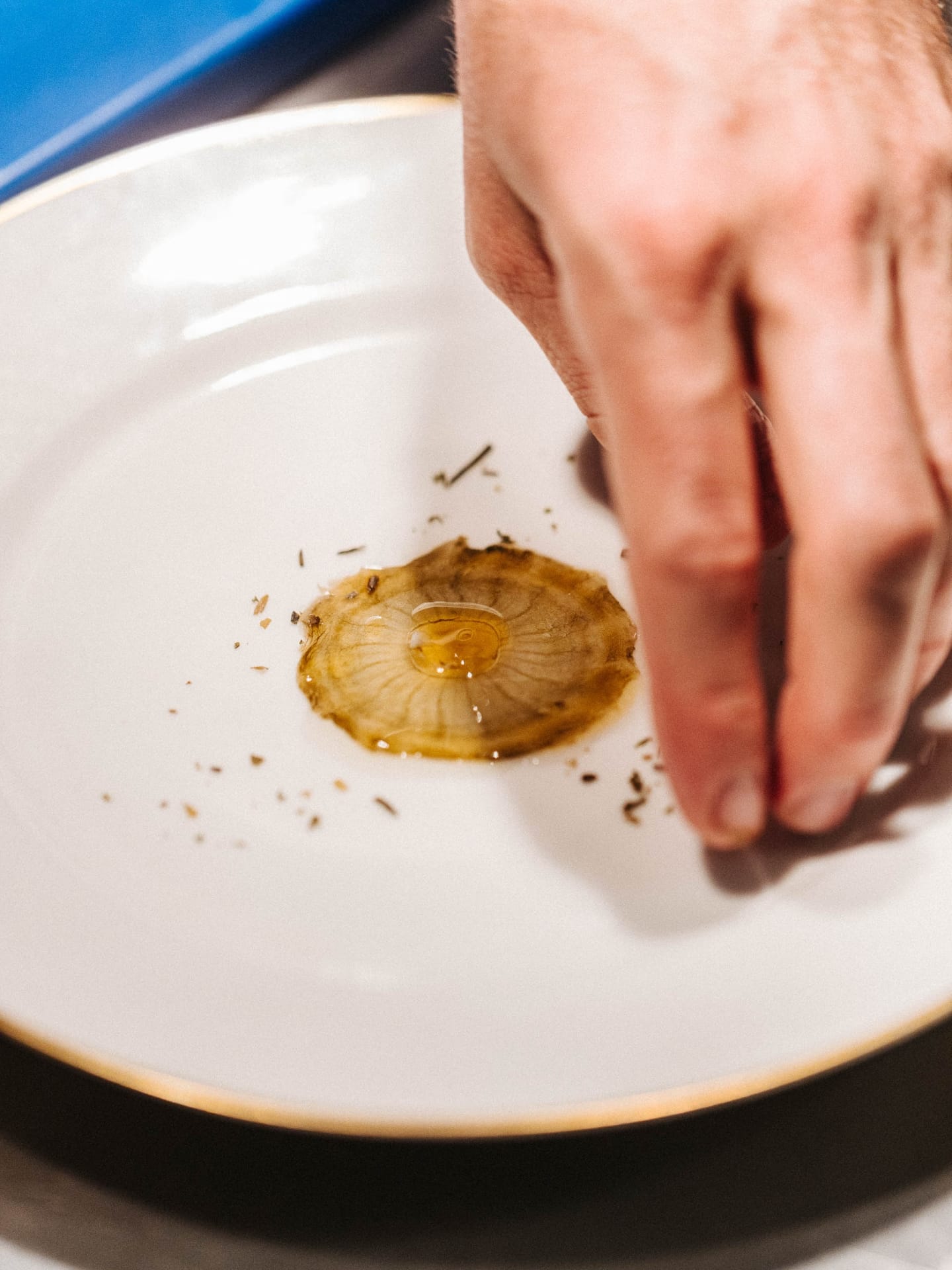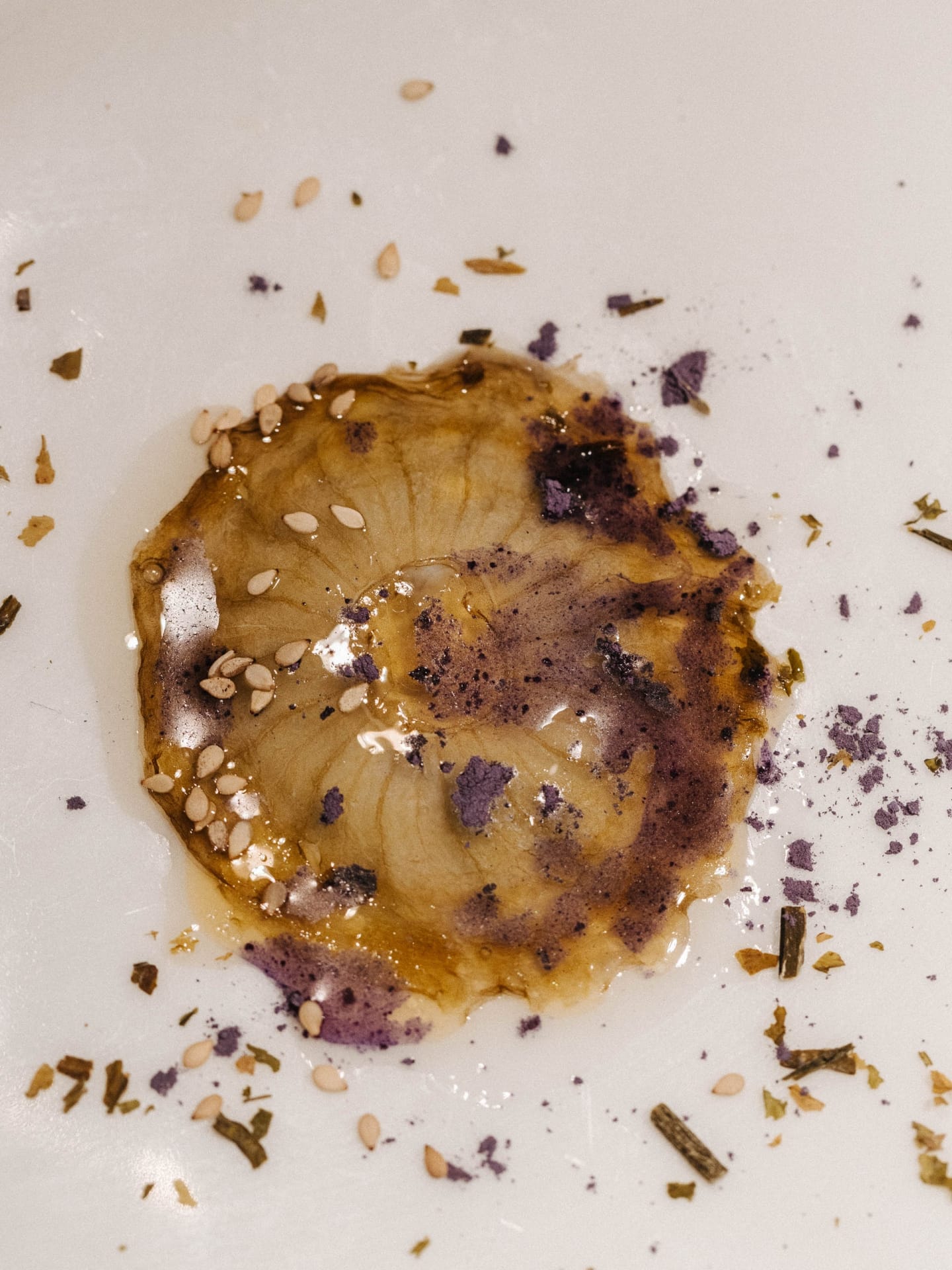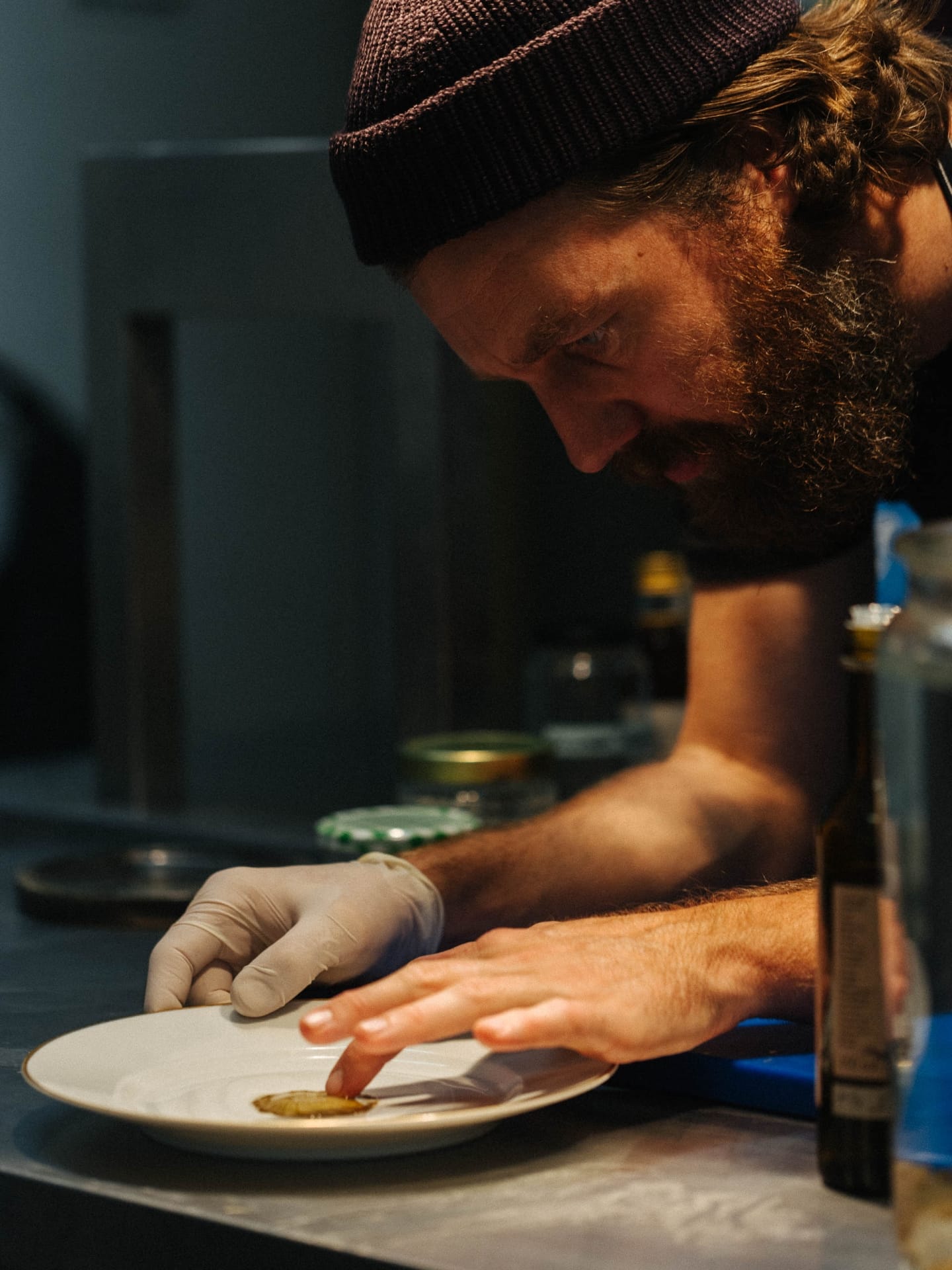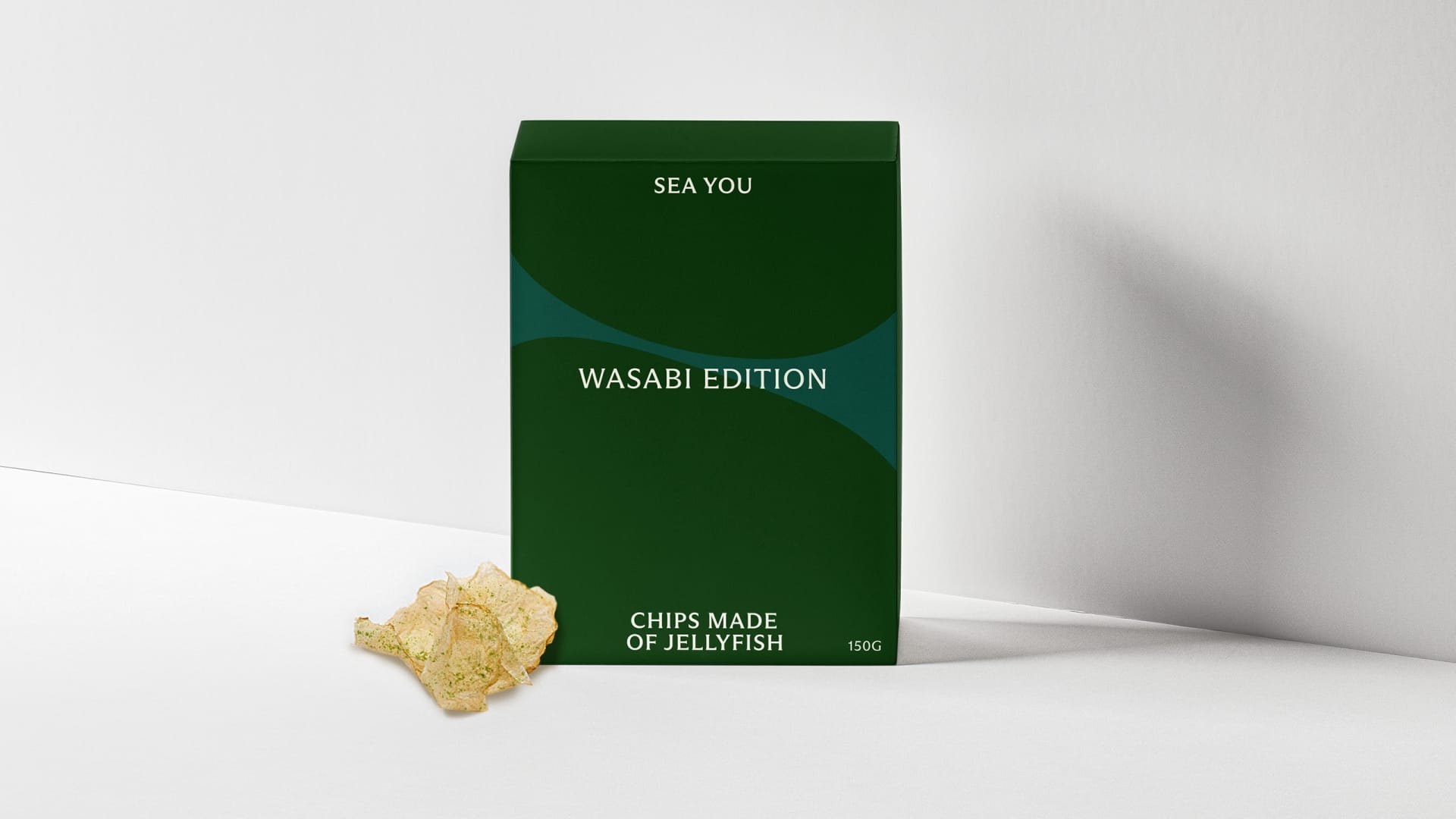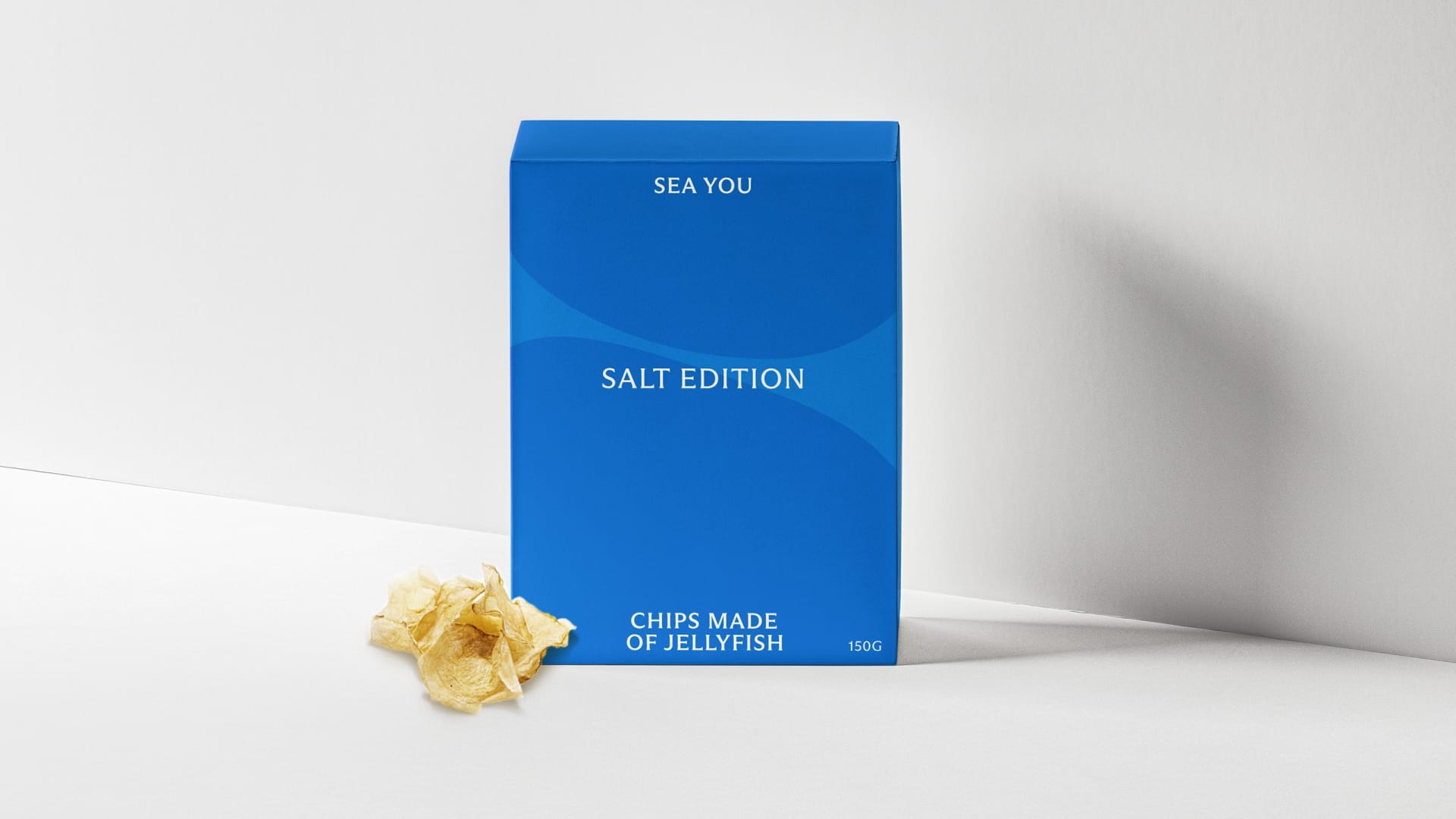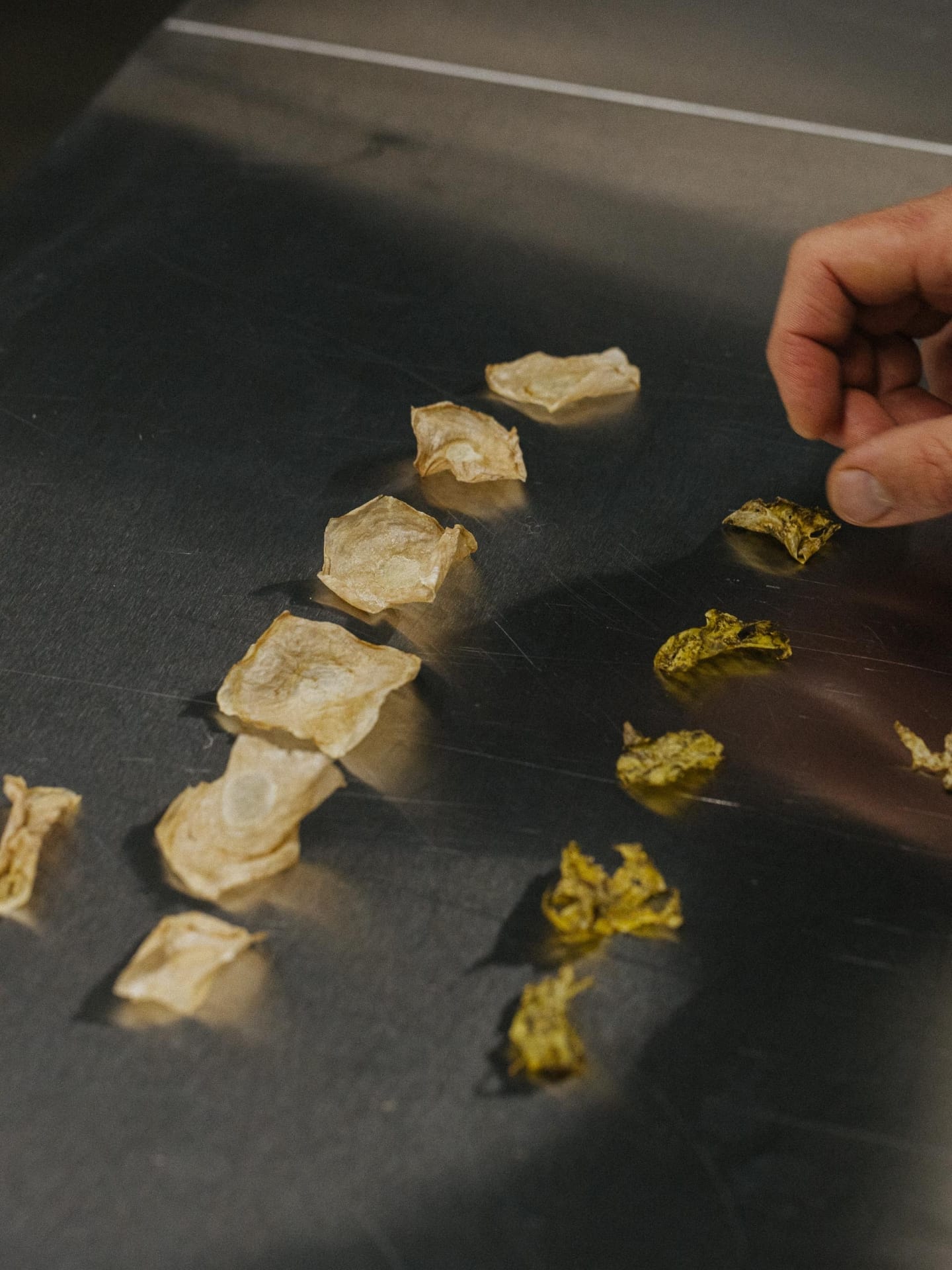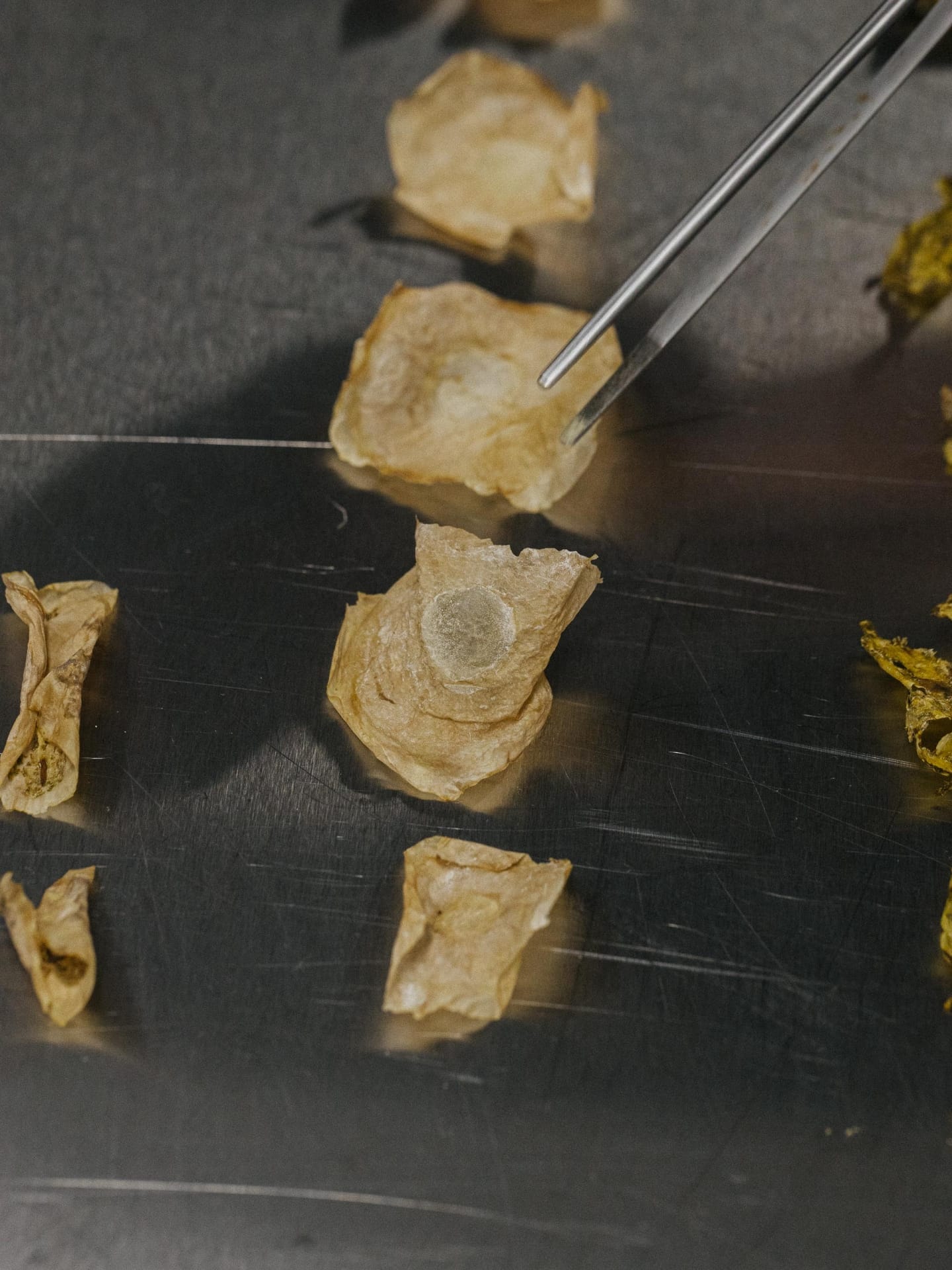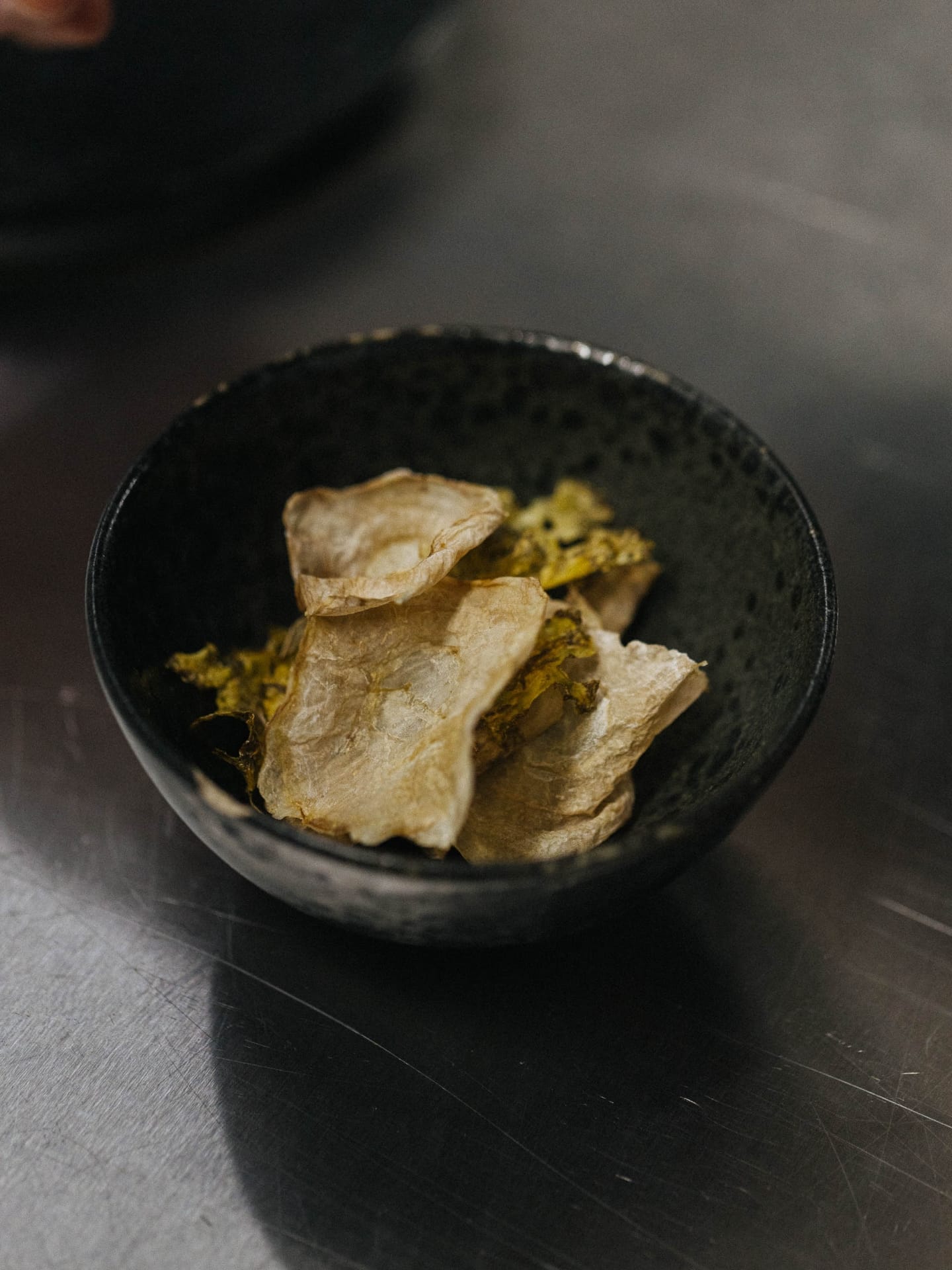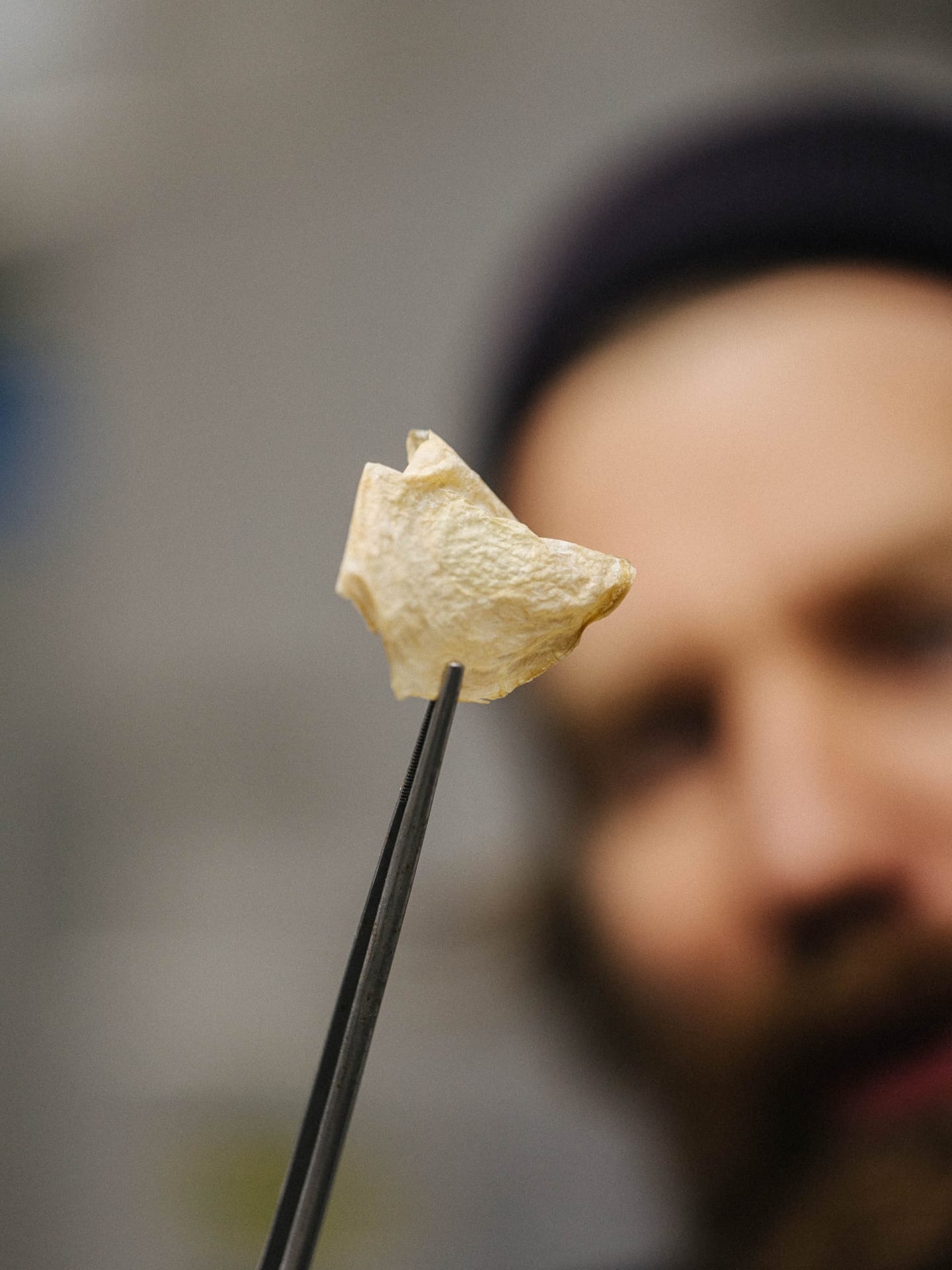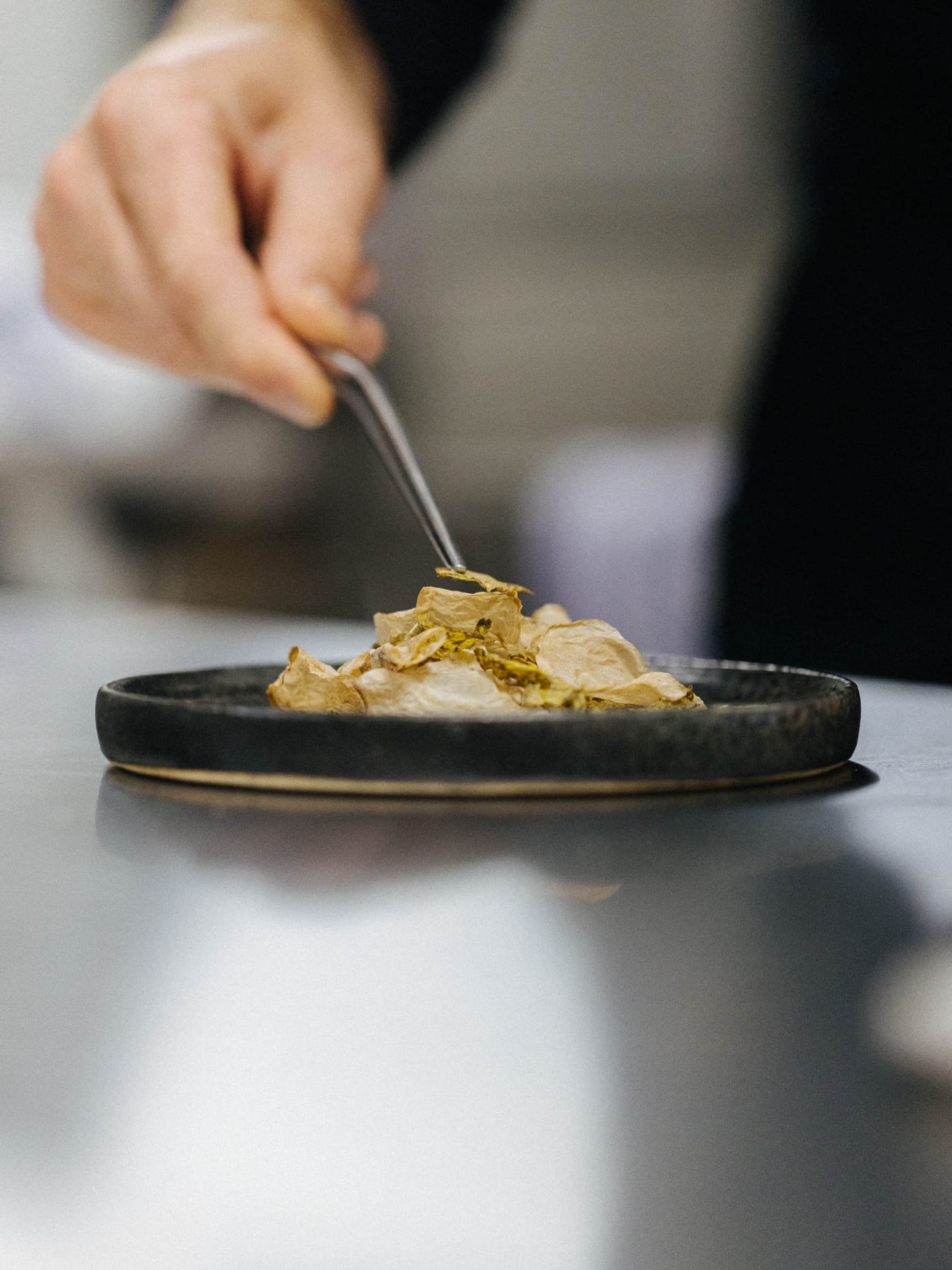The sound of the sea in your mouth
When we read that scientists in Bremen were breeding jellyfish and that they could help to secure food for mankind in the future, we pricked up our ears: jellyfish, food, the future – we wanted to get to the bottom of this.
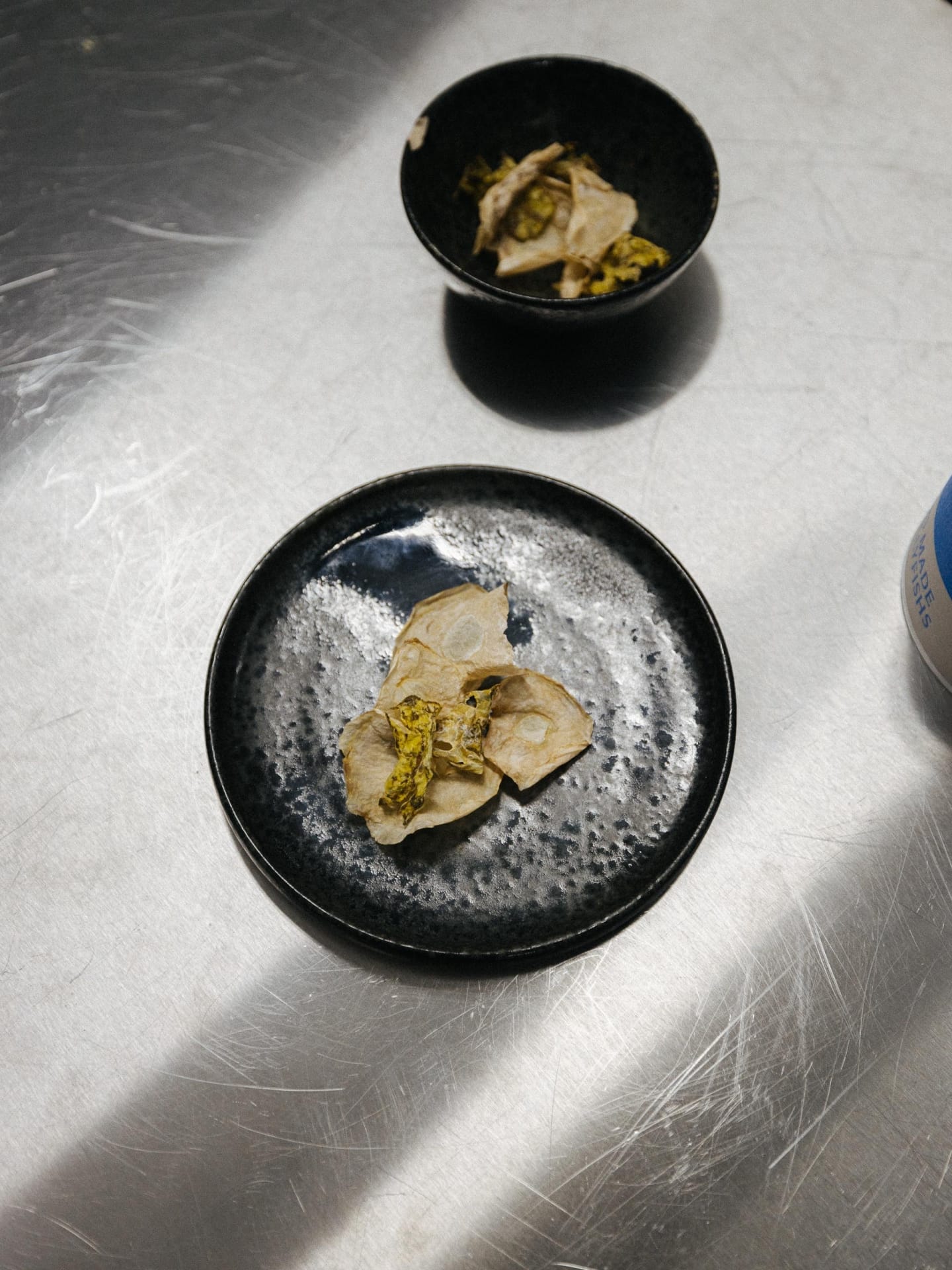
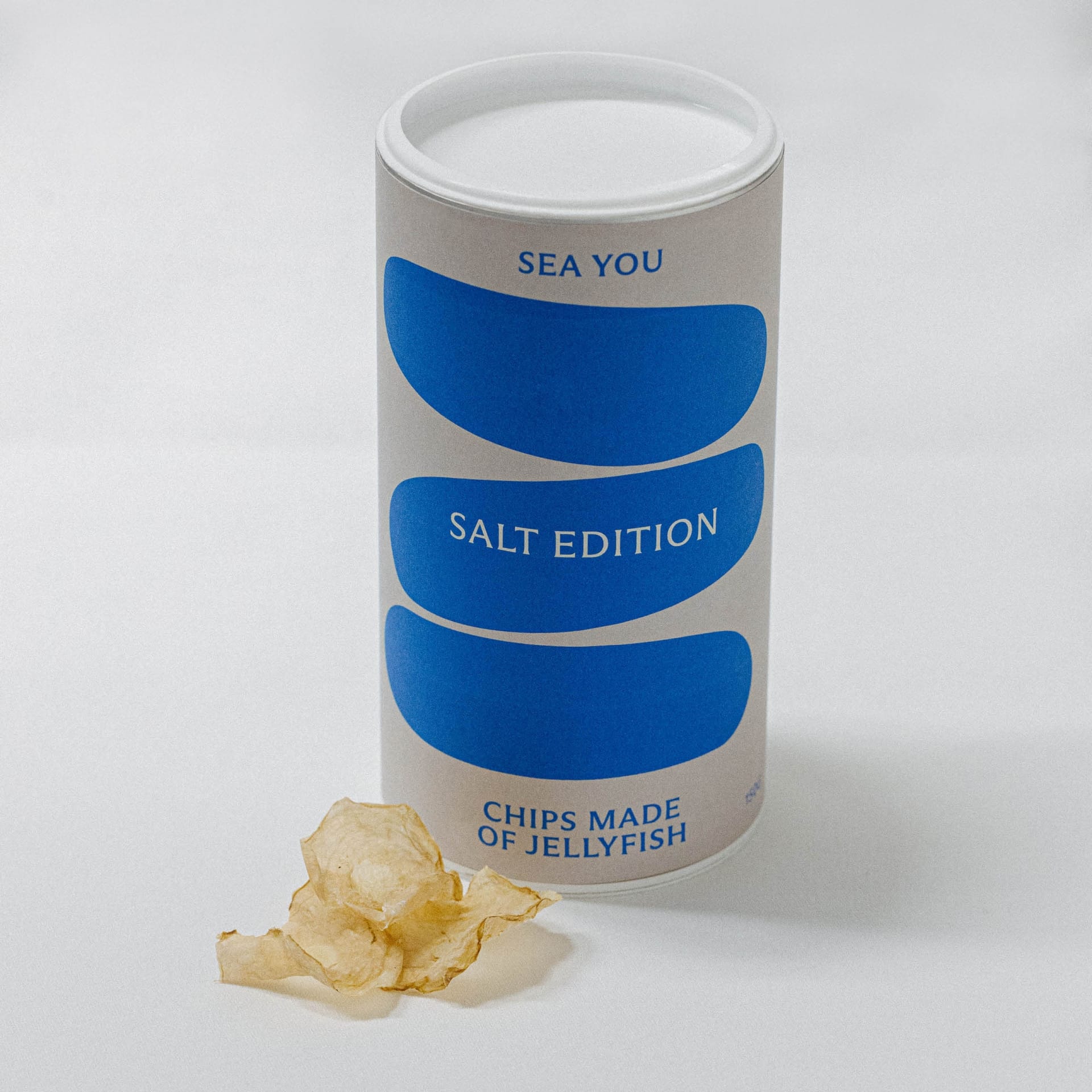
Jellyfish chips for Future
The scientist who deals with jellyfish and the sea in general is marine ecologist Dr. Holger Kühnhold from the Leibniz Centre for Tropical Marine Research in Bremen. We first met for an interview and it became clear that both sides are definitely interested in using jellyfish in the kitchen.
The jellyfish are here…
A few weeks later, the doorbell rings and a large polystyrene package is delivered. I guess that’s what our jellyfish are. We put them in an improvised seawater aquarium. With an air supply and special sea salt, we first observed the animals with devotion. Jellyfish are incredibly beautiful and move elegantly through the water.


Once again we realized what fascinating creatures are on the human menu. Whether fish, lobster, pigs or jellyfish. Most people buy a dead animal and ignore how it became food. In the case of jellyfish, these are animals without a central nervous system. This raises the question of whether vegetarian or perhaps even vegan people
Poison and pleasure
There was another hurdle with the jellyfish: they are mangrove jellyfish, which are not yet known as edible jellyfish. In Asia, other jellyfish are prepared and eaten, so there was a small residual risk that had to be overcome. We do have a little respect for nettle toxins, but after our first tentative touches, our jellyfish seem to be quite reserved when it comes to these toxins.
So we got a bit braver and tried the jellyfish raw. That makes sense, it’s no different with oysters. Traditionally, however, jellyfish are treated with salt and pickled for months.
Another jellyfish project has already presented a cookbook that inspired us to marinate the raw jellyfish briefly with salt and sugar. Beforehand, the jellyfish is washed and the arms are removed, as they detach easily from the umbrella. Similar to detaching the stem of mushrooms from the cap.
The jellyfish smell mildly of the sea, almost like a fresh oyster. The texture is soft and smooth, a little slippery but that’s not a bad thing at all. When chewing, you can definitely feel a firmness, so they do have some bite. Basically a delicacy, but probably nobody in this country has noticed it yet.
Sea crunch
However, our actual aim is to produce jellyfish chips. Mie Thorborg Pedersen developed a new process for this a few years ago. Simple drying does not work. Only by soaking the jellyfish in ethanol and then drying them is it possible to obtain them whole.
Basically, it’s very easy to do. All you need is alcohol (96.4%), time and jellyfish. After 2 days in ethanol, we place the animals on baking mats and leave them in the oven at 30°C to dry. The alcohol evaporates at room temperature, leaving behind wafer-thin chips that are reminiscent of paper. It still smells pleasantly of the sea.
If you now enjoy a handful of jellyfish chips, a sea sound with flavor unfolds. Crispy, crunchy, then soft, salty and seafoody. We have already designed suitable packaging for the jellyfish chips. Perhaps it will soon be available, the sea in a can.
